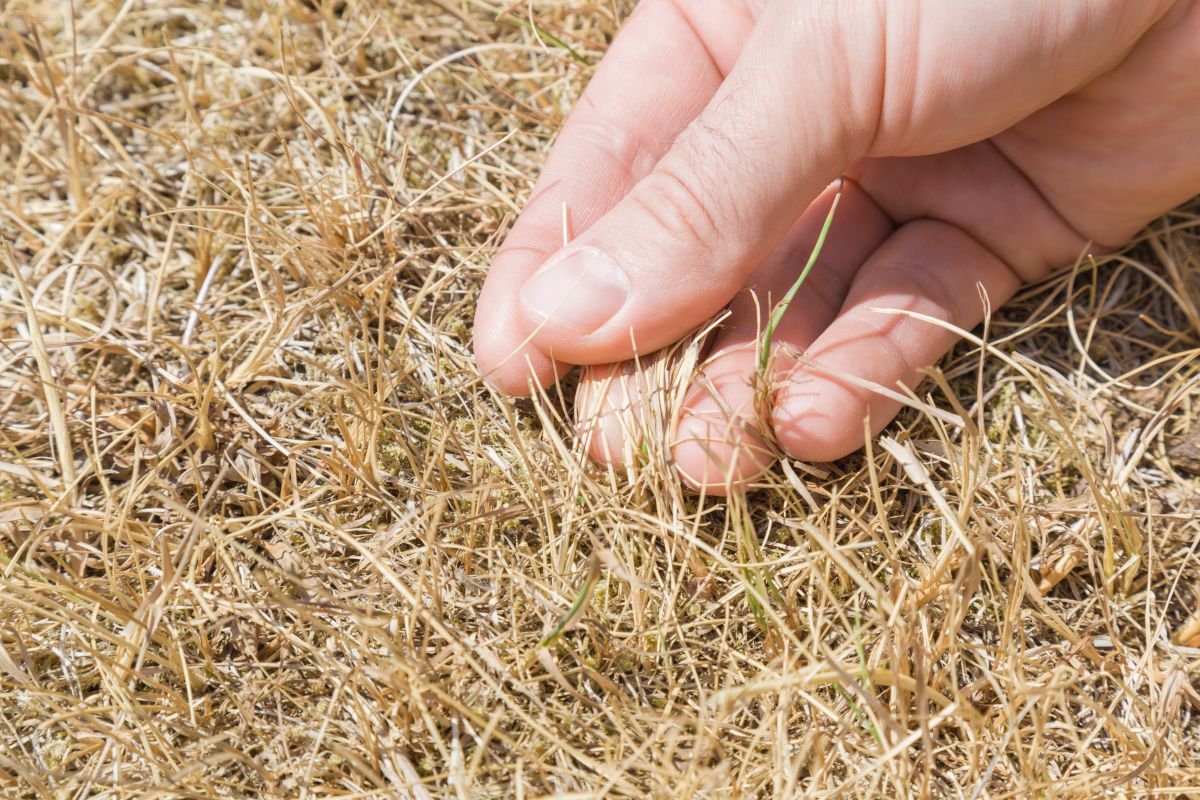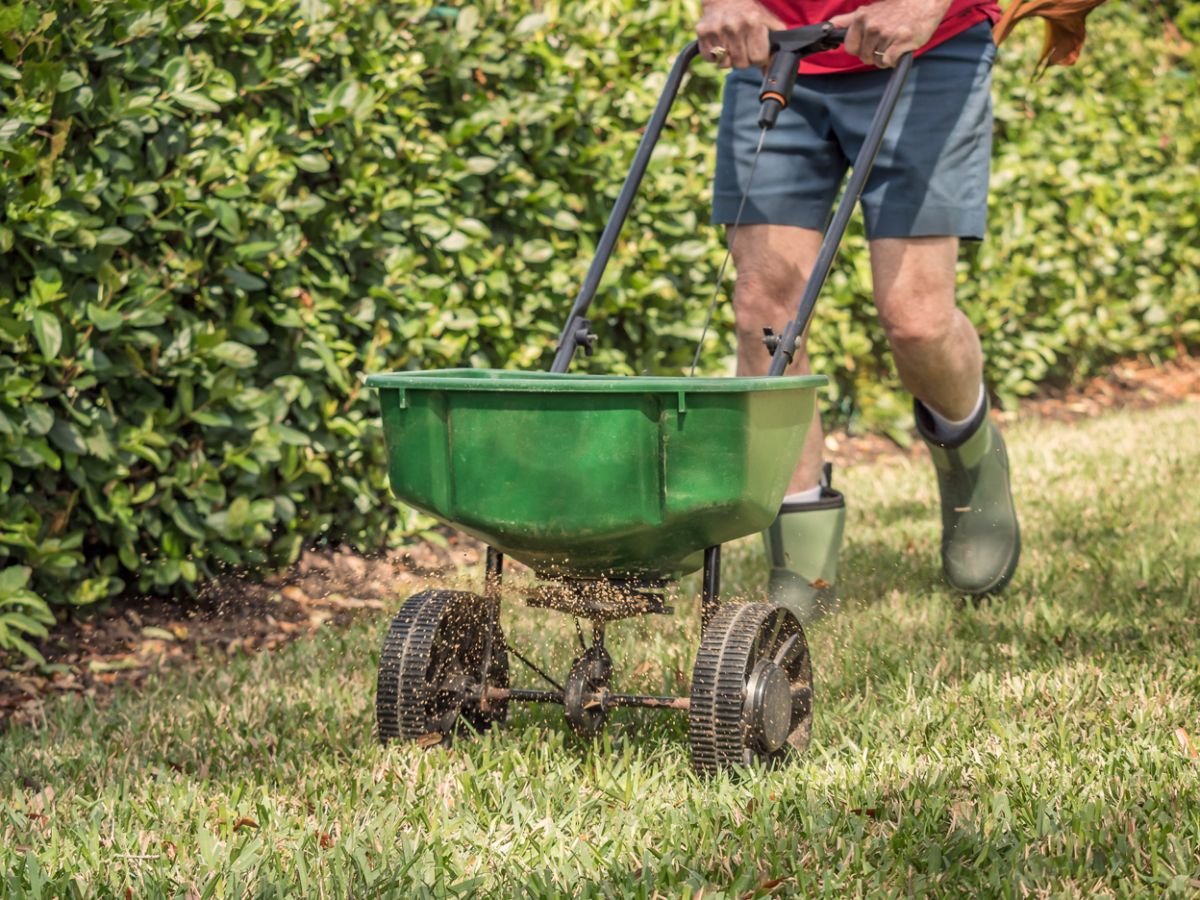With an average of 40 inches of precipitation annually, Northern Virginia is generally considered “water-rich”, but that doesn’t guarantee immunity from drought-like conditions. So what can we do to protect our lawns and gardens?
The summer of 2023 was hot, and Northern Virginia experienced severe drought during the late summer and fall — a primary factor that caused several major wildfires and damage to vulnerable landscapes. And according to the Weather Channel, this summer could be even hotter, so we wrote this post to help you protect your lawns and gardens and keep them healthy.
What defines a drought?
A drought is a prolonged period of abnormally low precipitation that reduces water availability and has a significant impact on the ecosystem, agriculture and our lawns and gardens. Droughts can vary in duration and intensity, from short-term dry spells to severe and long-lasting conditions that lead to water scarcity and environmental stress.
Don’t thunderstorms relieve drought?
Thunderstorms are quite common during sultry summers in Virginia, producing heavy rainfall in a very short period of time. But most of the rain will run off into drainage channels and streams rather than soak into the ground, causing changes in the landscape.
- The soil may become dry and compacted, causing erosion and reduced groundwater levels.
- You may see a decline in overall plant health, with plants wilting and browning.
- Streams and rivers could see reduced flow, potentially leading to water scarcity.
- Storm sewers could become overwhelmed, causing flooding in vulnerable areas.
Watch for signs of stress
It is important to pay attention to early signs of drought stress and take action promptly. Providing adequate water and adjusting watering schedules when you see these signs can help your lawn and gardens survive times of drought.
- Leaf curling — The leaves of some plants, particularly broad leaf plants, may start to curl or roll inward in an effort to conserve moisture.
- Slight wilting — Plants may exhibit slight wilting or drooping, especially during the hottest parts of the day.
- Faded leaf color — Leaves may show a subtle change in color, appearing duller or less vibrant than usual.
- Reduced growth — Plants may exhibit slower growth rates, with less noticeable new growth or leaves that are smaller than expected.
- Less resilience — Lawns may not bounce back as quickly after foot traffic or may show footprints for an extended period of time.
It's important to note that landscapes that face south or west are likely to exhibit signs of stress earlier than those facing north or east. This is because the sun's intensity is greater from these directions, and these areas tend to receive prolonged exposure to sunlight throughout the day.
The best way to water during a drought
Your lawn and gardens are going to need extra watering during a drought, but you need to ensure your efforts are effective. Here are a few basic watering guidelines for those with and without an in-ground sprinkler system.
- Adjust your sprinkler system — If you have an automatic sprinkler system, consider increasing the seasonal adjust button by 150-200%. If your controller doesn’t have this option, manually add extra time to your cycle to offset the lack of rain.
- Add a smart controller to your system — Smart controllers are designed to efficiently deliver water while minimizing waste. They’re able to read site conditions in real-time and deliver the correct amount of water based on the amount of moisture in the soil.
- Use water-efficient sprinkler heads — The key here is to use a head that delivers water directly to the plants' root zones, maximizing penetration and limiting drift and runoff. This includes drip irrigation, micro-sprinklers and rotary nozzles.
- Water deeply once a week — If you don’t have an irrigation system, set up your hose and manual sprinkler in one location and leave it for 3-5 hours, soaking the ground. Move it around until all areas are watered. Saturating the landscape weekly encourages deep root growth on plants, seed and sod with minimal effort.
- Water in the morning — It’s always best to water in the morning hours to optimize water usage, promote healthy growth and reduce the risk of fungal diseases. However, in the fall you can water at night since the evening temperatures are just right and won't cause any harm.
- Water new sod — Sod that is less than 2 years old will need some supplemental watering, as the roots haven’t developed enough to survive extreme weather conditions.
- Water vulnerable plants — Plants less than two years old will need extra watering. Like new sod, their root systems aren’t developed large enough to thrive in extreme weather. Pay special attention to smaller rooted plants too, like annuals and ground covers.
It’s especially important not to overwater trees, shrubs and perennials. Frequent watering trains your plants to rely on surface water for their needs, discouraging deep root growth and making trees, shrubs and perennials more vulnerable to drought.
How to care for your lawn during a drought
Prevention is always the best way to prepare for potential issues, including drought. Having a healthy lawn will protect it from the effects of drought.
- Seed your lawn in the fall — Grass seed needs adequate water to germinate, so spread it in the fall and keep it moist.
- Raise your mower’s height — Avoid mowing too short and never cut more than one-third off at a time. At Brandon Rushing, we recommend setting your mower’s height at 4.25 inches in the summer.
- Avoid fertilizing — High-salt fertilizers can burn your turf, especially when applied during hot, dry periods.
- Aerate and overseed in the fall — Aerating and overseeding your lawn regularly will make it healthy and strong, reducing its vulnerability to drought stress.
- Minimize foot traffic — Dry, hot weather can make your grass more sensitive to damage, so if it’s showing signs of stress, minimize foot traffic until it has time to recover.
- Sharpen your blades — Dull mower blades damage grass, so keep them sharp! At Brandon Rushing, we sharpen ours weekly, and even more often during busy times. If you’re just doing your lawn, once or twice a season is all that’s necessary.
Reach out for help
If your lawn is showing significant signs of stress — or even dying — reach out to us for help. There are other issues that could be causing you problems, such as disease, insect infestation and over/under fertilizing. We can help pinpoint the issue and offer a solution.
While drought is nothing new, the frequency and severity of drought seems to be on the rise. Giving your lawn and gardens the care they need before drought strikes is the best way to ensure they survive. To learn about our property care services, book a consultation. Your lawn and gardens will thank you!






